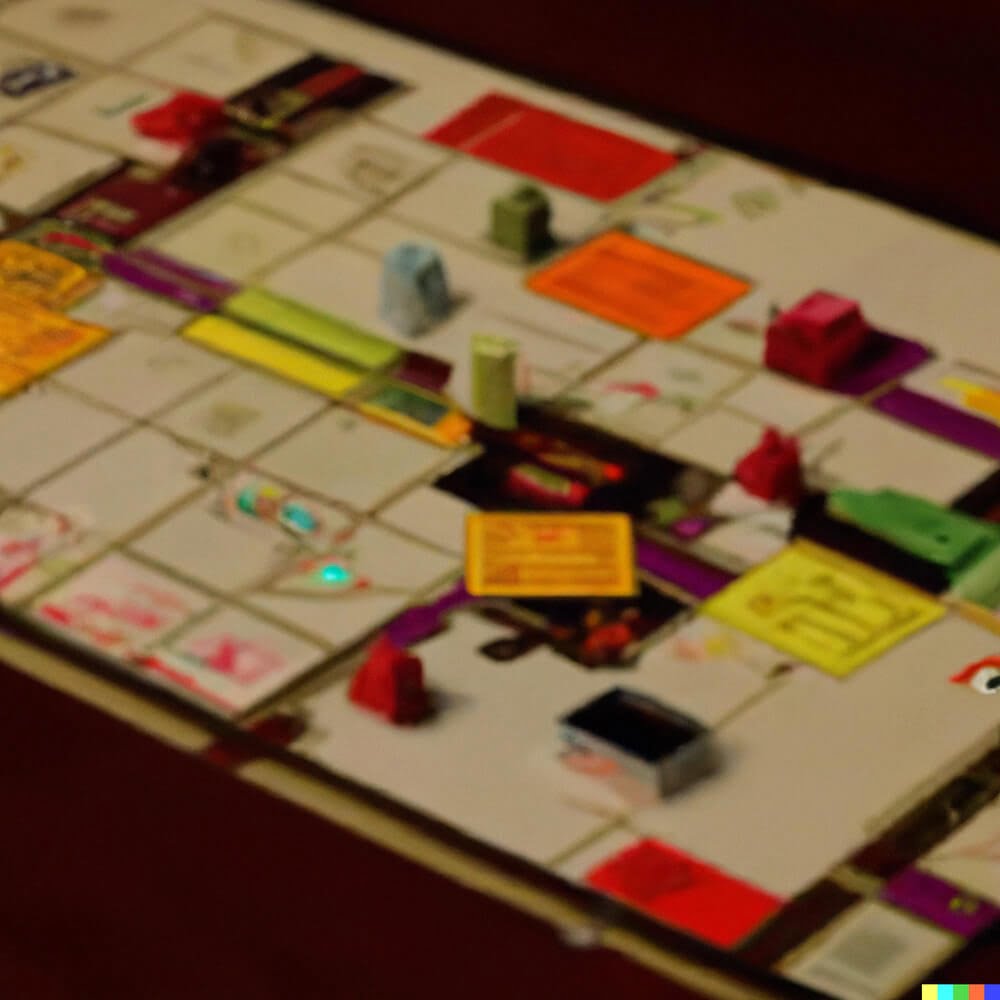Are you ready to dive into the world of mystery and deduction? The classic clue board game rules are a gateway to an exciting and suspenseful experience that has captivated players for decades. Whether you’re a seasoned detective or a newcomer to the game, understanding the intricacies of Clue is essential for a thrilling gameplay experience.
The classic clue board game rules lay the foundation for an engrossing mystery-solving adventure. Throughout its rich history, Clue has remained a beloved staple in the world of board games, captivating generations with its compelling narrative and clever gameplay mechanics. From setting up the game to unraveling the enigmatic web of clues, every aspect of Clue promises an engaging and immersive experience.
In this article, we will delve into the captivating world of Clue, exploring its history, rules, characters, weapons, and strategy tips. Get ready to sharpen your deductive skills as we take a closer look at how to master the classic clue board game rules and emerge victorious in this timeless classic. Whether you’re playing with friends or family, Clue is sure to provide hours of entertainment and excitement as you work to uncover the truth behind the mystery.
History of the Classic Clue Board Game
The history of the classic Clue board game dates back to 1949 when it was first published in the United Kingdom under the name “Cluedo.” The game was created by Anthony E. Pratt, a solicitor’s clerk from Birmingham, England. Pratt filed for a patent of the game in 1947 and it was granted in 1947, with the game being officially launched two years later.
Originally, the classic Clue board game was marketed as a game of skill rather than luck. It was designed to stimulate reasoning and deductive skills among players. Over the years, the game has undergone numerous updates and changes, including different variations and themed editions based on popular franchises such as Harry Potter and The Simpsons.
The classic Clue board game has gained widespread popularity over the years and has become a beloved classic among board game enthusiasts. It has also spawned various adaptations, including a successful film adaptation in 1985. The timeless appeal of solving a murder mystery through deduction and logic continues to attract new generations of players to this day.
Overview of the Classic Clue Board Game Rules
The classic Clue board game, also known as Cluedo, is a popular murder mystery game that challenges players to use deductive reasoning and logical thinking to solve the mystery of who killed Mr. Boddy in which room, and with which weapon. The game involves a mix of strategy, deception, and luck, making it an exciting and engaging activity for players of all ages.
Objective of the Game
The main objective of the classic Clue board game is to be the first player to accurately determine the three main aspects of the murder: the suspect, the room where the crime took place, and the weapon used. Players must move around the board from room to room collecting clues and narrowing down possibilities through a process of elimination.
Basic Rules of Gameplay
At the start of the game, each player receives a character card representing one of the potential suspects in the murder. They then move their tokens around different rooms in Mr. Boddy’s mansion trying to gather information about who may have committed the crime.
Through deductive reasoning and clever questioning, players work to figure out which suspect, room, and weapon cards are in play without revealing any information about their own hand. As players make their deductions and gather clues from other players’ responses, they begin marking off possibilities on their note sheets until they can make an educated guess as to what’s inside that confidential envelope.
Setting Up the Classic Clue Board Game
Before embarking on a thrilling murder mystery adventure with the classic Clue board game, it is essential to set up the game correctly. The first step in setting up the game is to unfold the game board and place it in the center of the table. The game board features different rooms and spaces where players will move their character tokens during gameplay.
After placing the game board, each player selects a character token and places it on the corresponding start space outside of the board. The character tokens represent different characters in the game, such as Mrs. Peacock, Colonel Mustard, or Miss Scarlet. Players can choose their favorite character or assign characters randomly for added mystery.
The next step is to distribute weapon tokens across various rooms on the board. These weapons include items like a rope, revolver, or candlestick. Each weapon token corresponds to one of six rooms: Kitchen, Ballroom, Conservatory, Dining Room, Lounge, or Study.
Shuffle the cards that represent these weapons and then place one card face down in each room without looking at them until players reach those rooms during gameplay. This ensures that each game provides a unique combination of suspects and weapons for added excitement and suspense.
This becomes the solution to the crime that players must solve by deducing which suspect committed the murder in which room with which weapon. Once “The Case File” is prepared, players are ready to embark on their journey through suspicion and mystery in this classic deduction board game.
Understanding the Characters and Their Roles
In the classic Clue board game, there are six characters that players can choose to play as. Each character has a unique name and personality, and they all have their own starting location in the game. Understanding the characters and their roles is crucial for strategizing and deducing who the murderer is.
The characters in the game are Miss Scarlett, Colonel Mustard, Mrs. White, Mr. Green, Mrs. Peacock, and Professor Plum. Each character has their own color associated with them, which corresponds to their player token and pad of detective notes. It’s important to note that each character also has a special ability that can be used once per game to gain an advantage.
Furthermore, each character starts in a different room in the mansion: Miss Scarlett starts in the Study, Colonel Mustard in the Library, Mrs. White in the Billiard Room, Mr. Green in the Conservatory, Mrs. Peacock in the Dining Room, and Professor Plum in the Hall. Understanding where each character starts is essential for forming theories about who could have committed the murder with what weapon and where it may have taken place.
- Miss Scarlett starts at The Study
- Colonel Mustard starts at The Library
- Mrs. White starts at Billiard Room
- Mr. Green starts at The Conservatory
- Mrs. Peacock starts at The Dining Room
- Professor Plum starts at The Hall
The Intriguing Classic Clue Board Game Weapons
In the Classic Clue Board Game, the weapons play a crucial role in solving the mystery. Understanding each weapon and its significance is essential for unraveling the clues and ultimately winning the game. The six weapons in the game include the lead pipe, revolver, rope, wrench, candlestick, and knife. Each of these weapons has a distinct place in the game and can be used strategically to mislead other players or deduce important information.
The lead pipe is a heavy blunt object that could inflict serious harm. The revolver is a deadly weapon, capable of inflicting fatal wounds from a distance. The rope can be used for strangulation and is a silent but lethal tool in committing a murder.
The wrench is another blunt instrument that can cause grievous injury, while the candlestick serves as a versatile weapon due to its weight and shape. Finally, the knife is a classic weapon of choice for many murderers due to its ease of use and deadly effectiveness.
Understanding how each weapon fits into different scenarios within the game will help players analyze clues more effectively and make strategic decisions about who may have committed the crime with which weapon in which room. Players must be vigilant in their observations and discussions throughout the game to collect vital information about these intriguing classic Clue board game weapons and use them to their advantage while trying to solve the mystery at hand.
Gameplay Mechanics and Strategy Tips
When playing the classic Clue board game, it’s important to understand the gameplay mechanics and have a strategy in mind to increase your chances of winning. Here are some helpful tips for navigating the game effectively:
1. Gather Information: One of the key aspects of gameplay in Clue is gathering information by moving around the game board and making suggestions about who the murderer might be, which weapon was used, and where the crime took place. Use this information to eliminate possibilities from your own hand and deduce what cards other players may be holding.
2. Utilize Secret Passages: The game board features secret passages that allow you to move quickly from one room to another, giving you an advantage in reaching different areas of the mansion. Take advantage of these passageways strategically to cover more ground and make informed accusations.
3. Make Accusations Wisely: As you gather clues and eliminate possibilities, it’s essential to make accurate accusations. Be strategic in your choices based on the information you’ve collected throughout the game. Making a premature accusation can lead to false assumptions and set you back in solving the mystery.
By keeping these gameplay mechanics and strategy tips in mind, you can enhance your experience playing the classic Clue board game and increase your chances of emerging victorious in solving the gripping murder mystery. Happy sleuthing.
Winning the Classic Clue Board Game
When playing the classic Clue board game, it’s important to remember that strategy is key. One of the most important tips for winning at Clue is to take good notes. Keep track of which cards you have seen, as well as which cards other players have shown you. This can help you deduce which cards are in the solution envelope, giving you a better chance at making an accurate accusation.
Another important tip for winning at Clue is to pay attention to your opponents’ moves. Watch who goes where and with what weapon. Use this information to eliminate possibilities and hone in on the true solution. Additionally, don’t be afraid to ask questions strategically in order to gather more information about the cards in play.
Lastly, when making a final accusation in the classic Clue board game, be confident in your choice. Don’t second-guess yourself; if you have been diligent in your note-taking and observation throughout the game, trust your instincts and make your accusation with conviction.
| Tip for Winning | Description |
|---|---|
| Take Good Notes | Keeping track of what cards have been seen can help deduce the solution. |
| Pay Attention | Observe opponents’ moves and use that information strategically. |
| Be Confident | Trust your instincts when making a final accusation. |
Conclusion and Final Thoughts on the Classic Clue Board Game
In conclusion, the Classic Clue Board Game is a timeless and beloved game that has entertained players for generations. Its intriguing blend of mystery, strategy, and deduction has made it a favorite among board game enthusiasts of all ages. The game’s rich history, from its origins in the UK to its popularity worldwide, adds to its enduring appeal.
The Classic Clue Board Game rules are simple yet provide endless possibilities for gameplay. Setting up the game and understanding the characters and weapons are essential for a successful investigation. Players must use their deductive reasoning skills and carefully consider their moves to uncover the culprit, weapon, and location of the crime. The gameplay mechanics and strategy tips further add depth to the experience, making each session unique and engaging.
Ultimately, the thrill of winning the Classic Clue Board Game lies in outsmarting your opponents and successfully solving the mystery. With careful planning, strategic thinking, and a bit of luck, players can emerge victorious in this thrilling whodunit adventure. Whether playing with family or friends, the Classic Clue Board Game continues to captivate players with its timeless charm and enduring appeal.
Frequently Asked Questions
How Do You Play the Classic Clue Board Game?
The classic Clue board game is played by 3-6 players who take on the roles of different characters to solve a murder mystery. Players move around the game board to enter rooms, make suggestions about the suspect, weapon, and location of the crime, and ultimately try to guess the solution before anyone else.
What Are the Rules to the Board Game Clue?
The rules of the board game Clue involve rolling dice to move through the mansion, making suggestions about the murderer, weapon, and room, and using deduction to determine which cards other players are holding. The goal is to be the first player to correctly guess the three unknown cards – one suspect, one weapon, and one room – before anyone else.
What Is the Original Clue Board Game?
The original Clue board game was invented by Anthony E. Pratt in 1944 and was originally called “Murder!” The game was later patented and released as Cluedo in 1949 in the United Kingdom by Waddingtons Games.
In 1949 it slowly made its way across from England to America under another name “Clue”. The game has remained popular for decades with various editions and adaptations keeping it fresh for new generations of players.

I love playing all kinds of games – from classics like Monopoly to modern favourites like Ticket to Ride.
I created this blog as a way to share my love of board games with others, and provide information on the latest releases and news in the industry.





